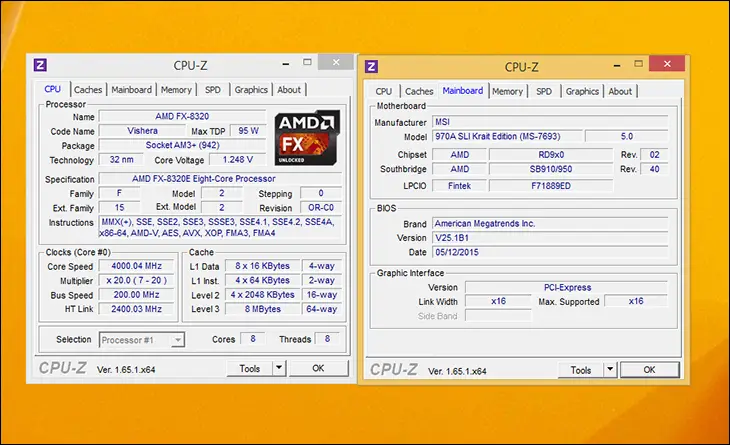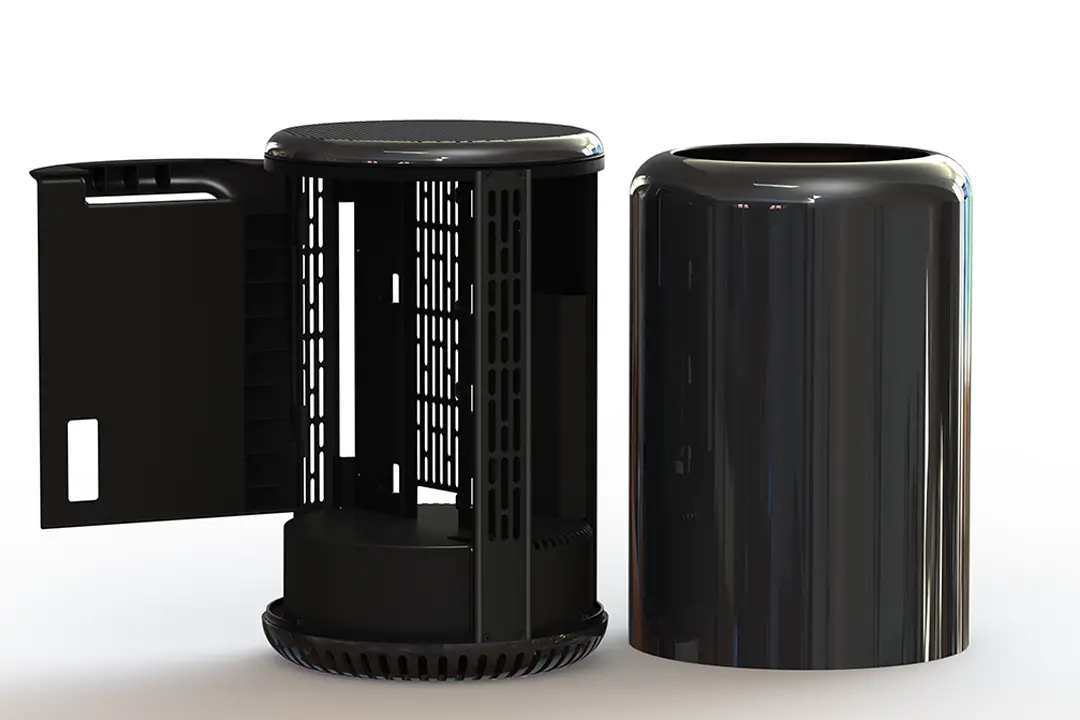In the Real Gaming Benchmarks section we will show a number of timed real world game play results using FRAPS and four popular modern PC games. Once again Unigine’s Valley benchmark was run for 15 minutes to ‘warm up’ the video card prior to testing.
Battlefield 4 Gaming Benchmark
Battlefield 4 is first person shooter video game, published by EA Digital Illusions CE and released in October 2013. Unlike most, this games does not include an in-game benchmark. This makes it perfect for more real world gaming tests. To obtain repeatable results we have used FRAPs and recorded the first 90 seconds of the single player Tashgar level. An average of four runs was taken.
The settings used in the testing below are Ultra pre-set for quality, with VSync disabled and a resolution of 1920×1080. Neither system posts great results – as both are handicapped, but as with all the rest the Krait combination is noticeably better.
Neither system posts great results – as both are handicapped, but as with all the rest the Krait combination is noticeably better.
Assassins Creed: Black Flag Gaming Benchmark
Assassins Creed: BF is an historical action-adventure video game, published by published by Ubisoft and released in October 2013. Like Battlefield 4 this games does not include an in-game benchmark. This makes it perfect for more real world gaming testing. To obtain repeatable results we have used FRAPs and recorded a custom run through Havana’s marketplace. An average of four runs was taken.
The settings used in the testing below are highest settings for quality, VSync disabled and a resolution of 1920×1080. Environment quality was set to very high, Anti-Aliasing was set to TXAA 4X, Ambient Occlusion set to HBAO+ (high), Shadow Quality set to ‘soft shadow’, Motion Blur and Volumetric Blur both set to On. Texture Quality, Reflection Quality, and God Rays all set to High. Assassins Creed: Black Flag is still a fun game and it really is a fun game when we used the 960 SLI combo’ed KRAIT.
Assassins Creed: Black Flag is still a fun game and it really is a fun game when we used the 960 SLI combo’ed KRAIT.
Call of Duty: Ghosts Gaming Benchmark
Call of Duty: Ghosts is a first person shooter video game, published by Activision and released in October 2013. Since it does not include an in-game benchmark, it perfect for more real world gaming testing. To obtain repeatable results we have used FRAPs and recorded 90 seconds of the single player ‘Ghost Stories’ level, starting as soon as we resume control of Logan back on Earth. An average of four runs was taken.
The settings used in the testing below are highest settings for quality, VSync disabled and a resolution of 1920×1080. Image Quality, Textures Resolution, Normal Map Resolution, and Specular Map Resolution set to Extra. Screen Space Ambient Occlusion and Antistrophic Filtering set to High, Terrain Detail set to ON, and Anti-Aliasing was set to TXAA 4X. With Shadows, Distortion, Motion Blue and Depth of Field set to Yes. These results are not even close…and we have lost track of how badly the 960/KRAIT combo is beating our typical value AMD build.
These results are not even close…and we have lost track of how badly the 960/KRAIT combo is beating our typical value AMD build.
Crysis 3 Gaming Benchmark
Crysis 3 is a first person shooter video game, published by Electronic Arts and released in February 2013. While older than some of the others it is one of the most visually stunning games released to date and puts a lot of demands on the GPU. This makes it perfect for more real world gaming testing. To obtain repeatable results we have used FRAPs and recorded 90 seconds of the single player ‘Post Human’ level, starting as soon as soon as prophet is handed a Hammer II pistol by Psycho. An average of four runs was taken.
The settings used in the testing below are highest settings for quality, VSync disabled and a resolution of 1920×1080. Texture Quality, Game Effects, Objects, Particles, Post Processing, Shadows, Shading, Water, and System Specs all set to Very High. Motion Blur was set to High and Lens Flare was set to On. Anti-Aliasing was set to MSAA 8X and Antistrophic Filtering was set to 16x. Honestly, if you want a gaming rig the Krait with dual 960’s is a much wiser investment.
Honestly, if you want a gaming rig the Krait with dual 960’s is a much wiser investment.
MSI 970A SLI KRAIT – Overclocking
 Sometimes inexpensive motherboards are also the best ‘bang for your buck’ overclocking motherboards for enthusiasts. Sadly overclocking is the biggest weakness of the MSI 970A SLI KRAIT. The reason for this is the rather anemic power delivery subsystem and we would be very hesitant to push a 125w TDP processor to the bleeding edge like you can on some other slightly more expensive boards.
Sometimes inexpensive motherboards are also the best ‘bang for your buck’ overclocking motherboards for enthusiasts. Sadly overclocking is the biggest weakness of the MSI 970A SLI KRAIT. The reason for this is the rather anemic power delivery subsystem and we would be very hesitant to push a 125w TDP processor to the bleeding edge like you can on some other slightly more expensive boards.
To be fair some of our distaste does stem from the 8320e processor we opted for, as it too is not what we would classify as a ‘good’ – let alone ‘great’ – overclocking chip. However, we did swap in a FX-8350 and it didn’t do much better, and that selfsame FX-8320e did go higher on the MSI 970 Gaming. So while our FX-8320e is not a great chip, it really is the board that was holding it back. In the end we did push the board and chip to a relatively safe 4.2GHz on all cores. To put that another way we boosted the speed of the FX8320e to better than that of a FX-8350. Is it worth the effort of manually tweaking things so as to gain that extra 200MHz? Only you can answer that question, and it will come down to whether or not you like a challenge and enjoy overclocking for the shear experience of it. What we can say is that investment of time and effort in manually overclocking is not going to be worth it to most of the 970A KRAIT’s customer base. That is not because the built in OC Genie will boost performance – it doesn’t. Rather a couple 100Mhz really does not make all that much difference in real world scenarios. Speaking of OC-Genie, this board only has one ‘gear’ and unfortunately it does do much for the 8320e, instead what it does it make all cores go at 4.0Ghz and boosts the voltage a touch. That is not all that much in the grand scheme of things, but then again, for a $80 motherboard having all ‘eight’ cores running at 4.0Ghz does still result in a rather good performer!
What we can say is that investment of time and effort in manually overclocking is not going to be worth it to most of the 970A KRAIT’s customer base. That is not because the built in OC Genie will boost performance – it doesn’t. Rather a couple 100Mhz really does not make all that much difference in real world scenarios. Speaking of OC-Genie, this board only has one ‘gear’ and unfortunately it does do much for the 8320e, instead what it does it make all cores go at 4.0Ghz and boosts the voltage a touch. That is not all that much in the grand scheme of things, but then again, for a $80 motherboard having all ‘eight’ cores running at 4.0Ghz does still result in a rather good performer!


 So what does overclocking net you? Not much, but free frames per second are free frames per second! To be honest, for day to day tasks we doubt most consumers would notice the difference, but for games an extra frame or two on the minimum frames side of the equation will be greatly appreciated.
So what does overclocking net you? Not much, but free frames per second are free frames per second! To be honest, for day to day tasks we doubt most consumers would notice the difference, but for games an extra frame or two on the minimum frames side of the equation will be greatly appreciated.











